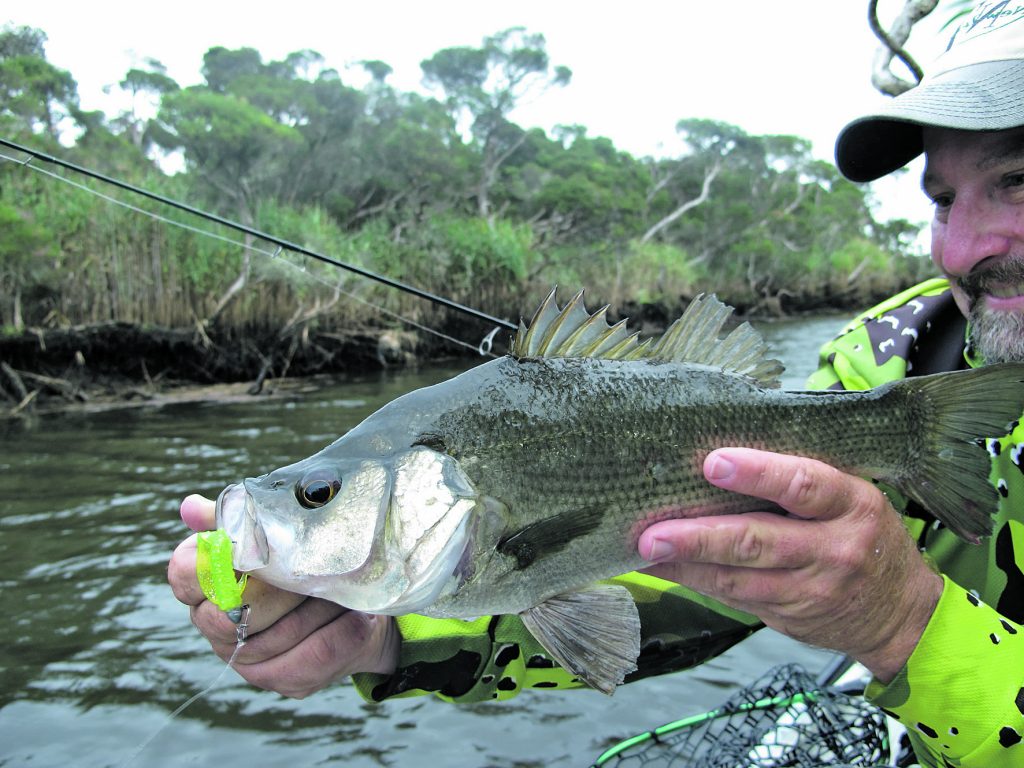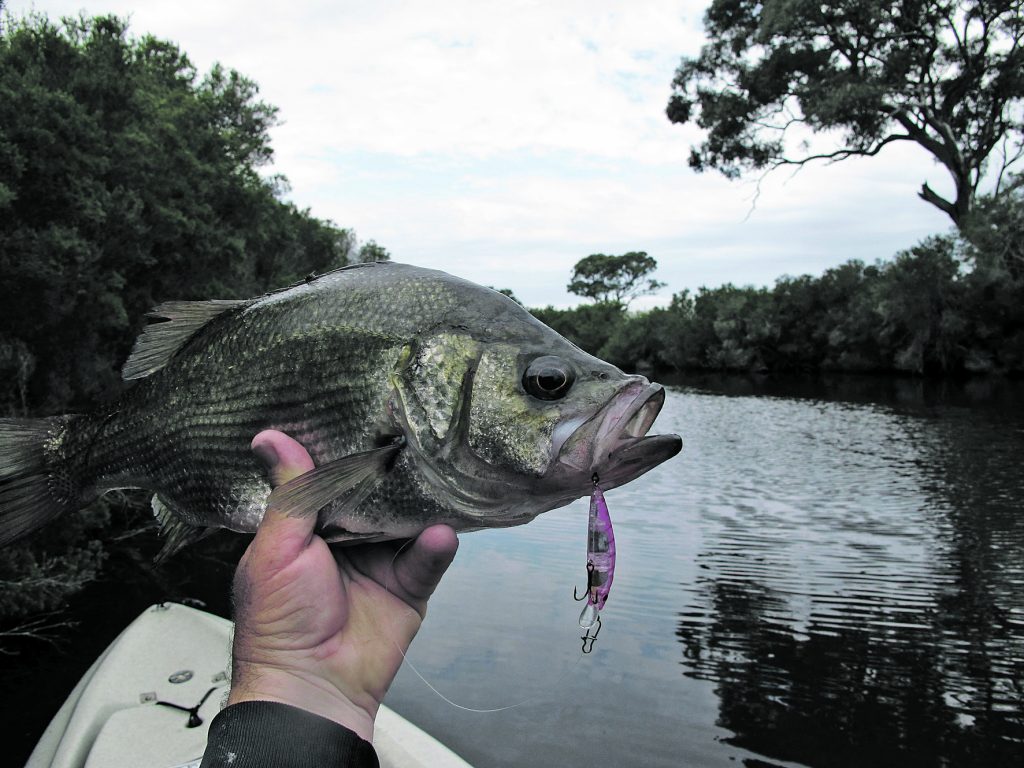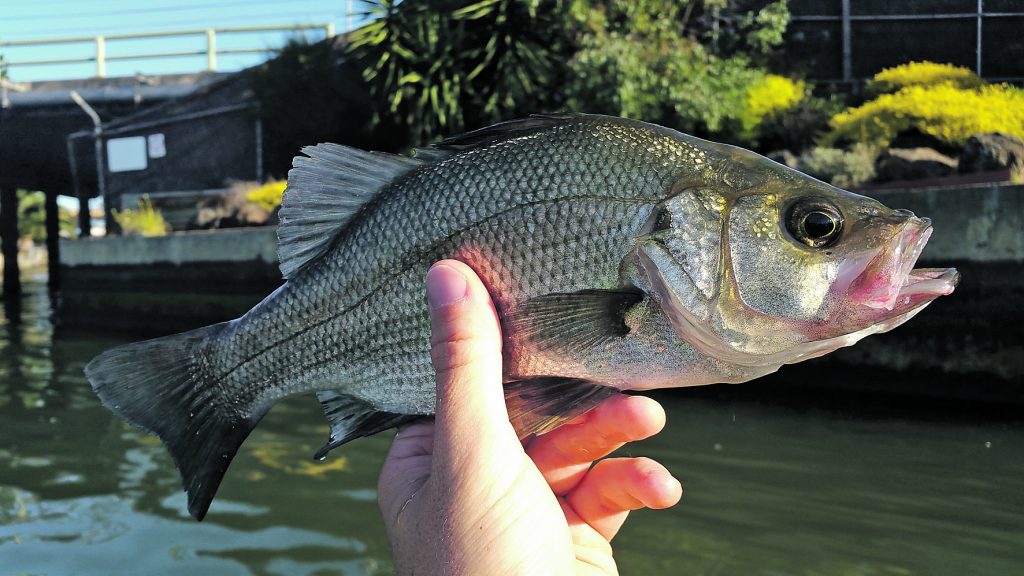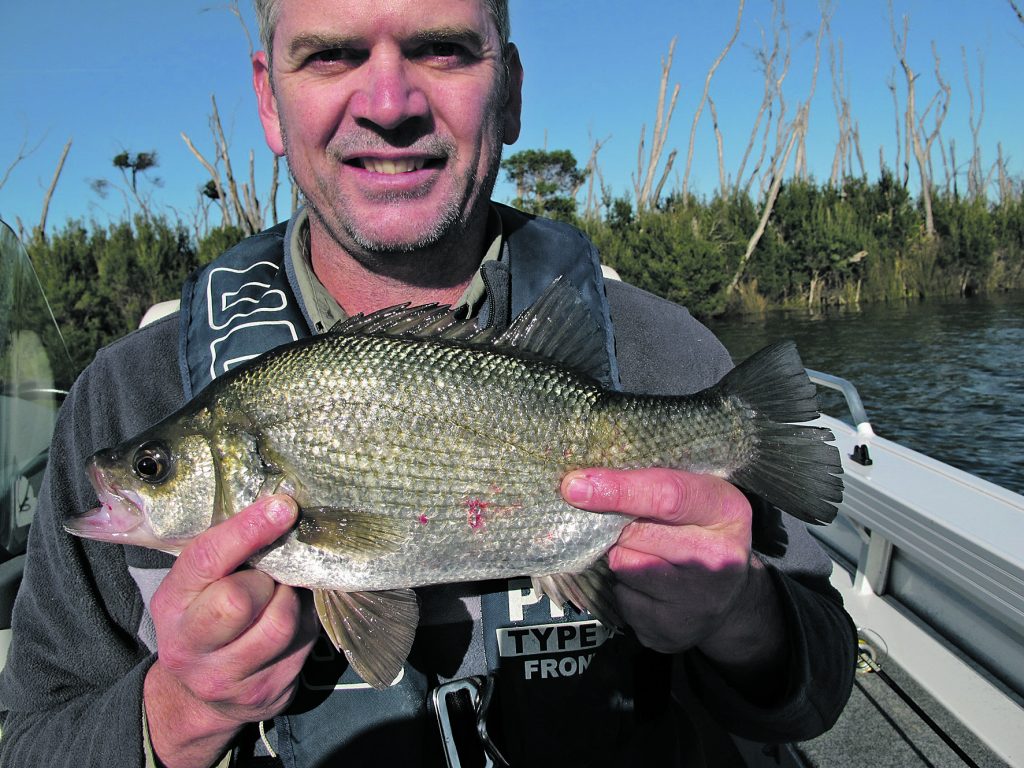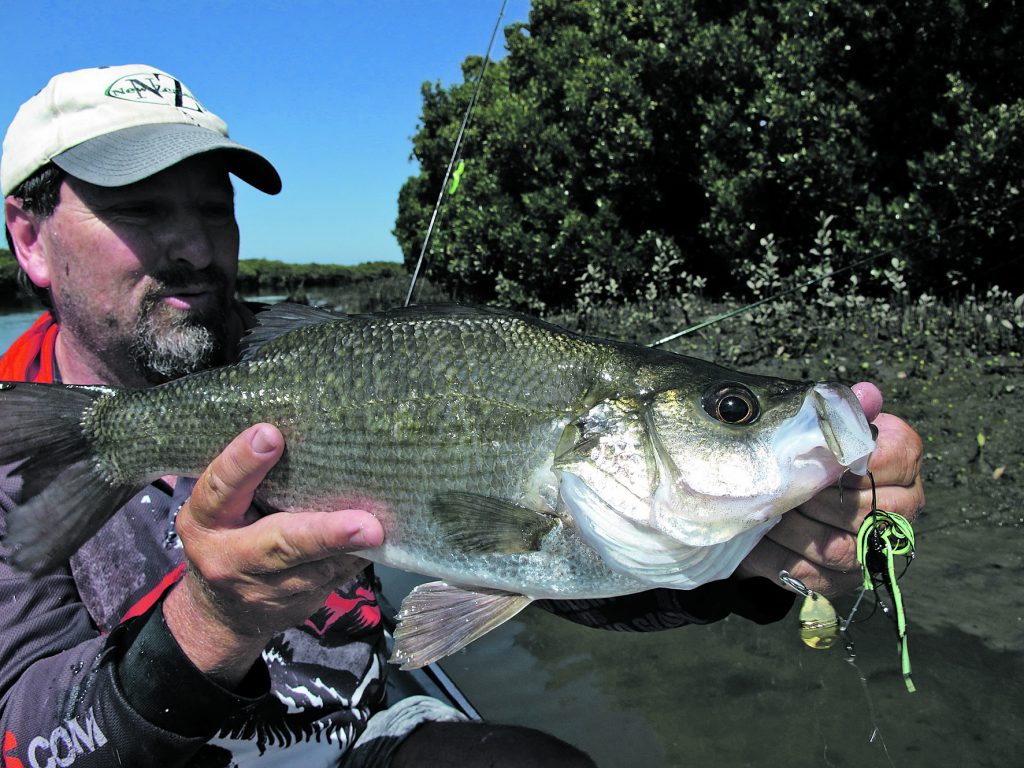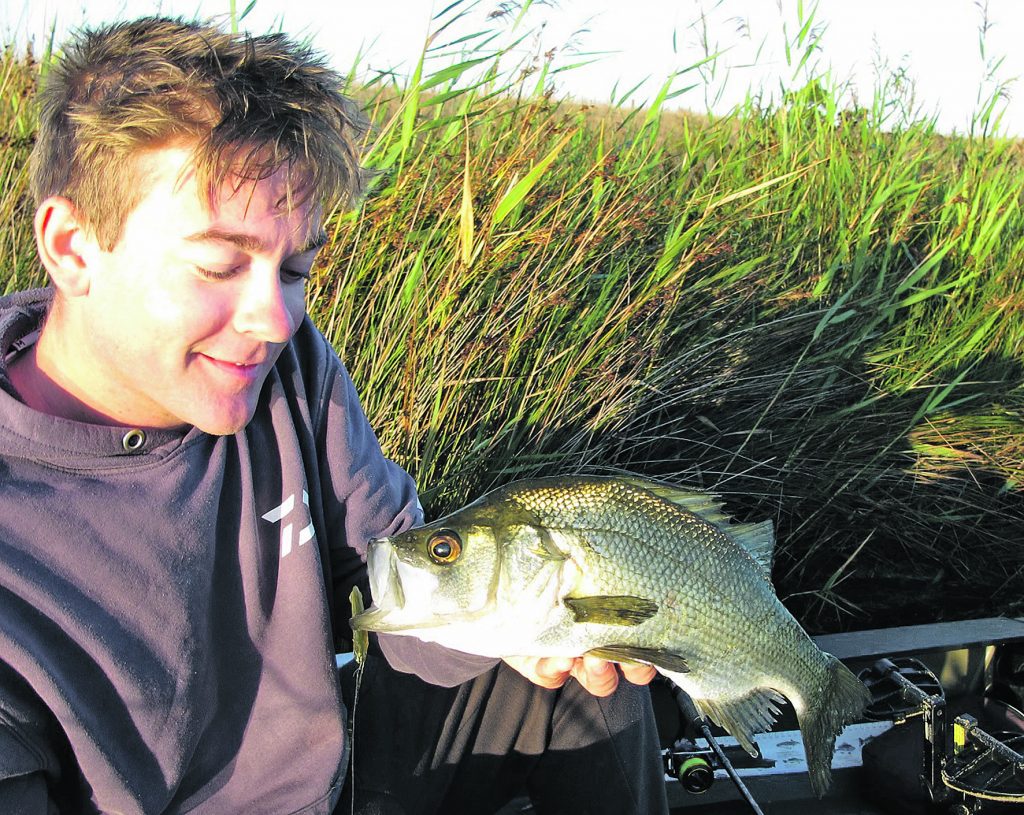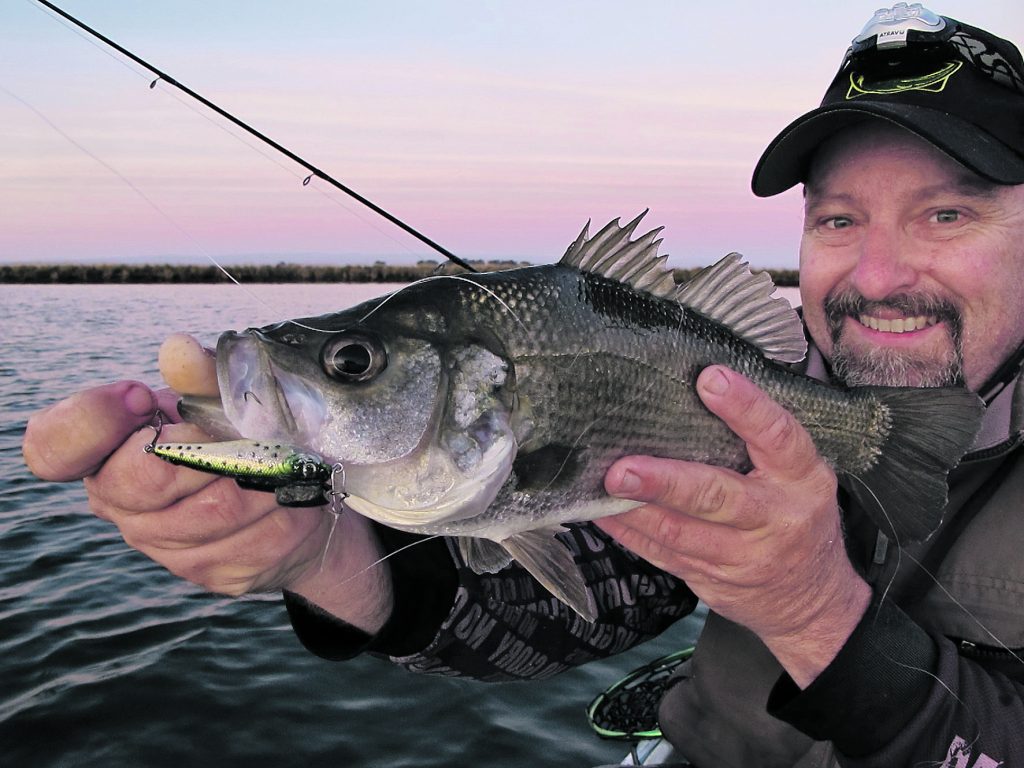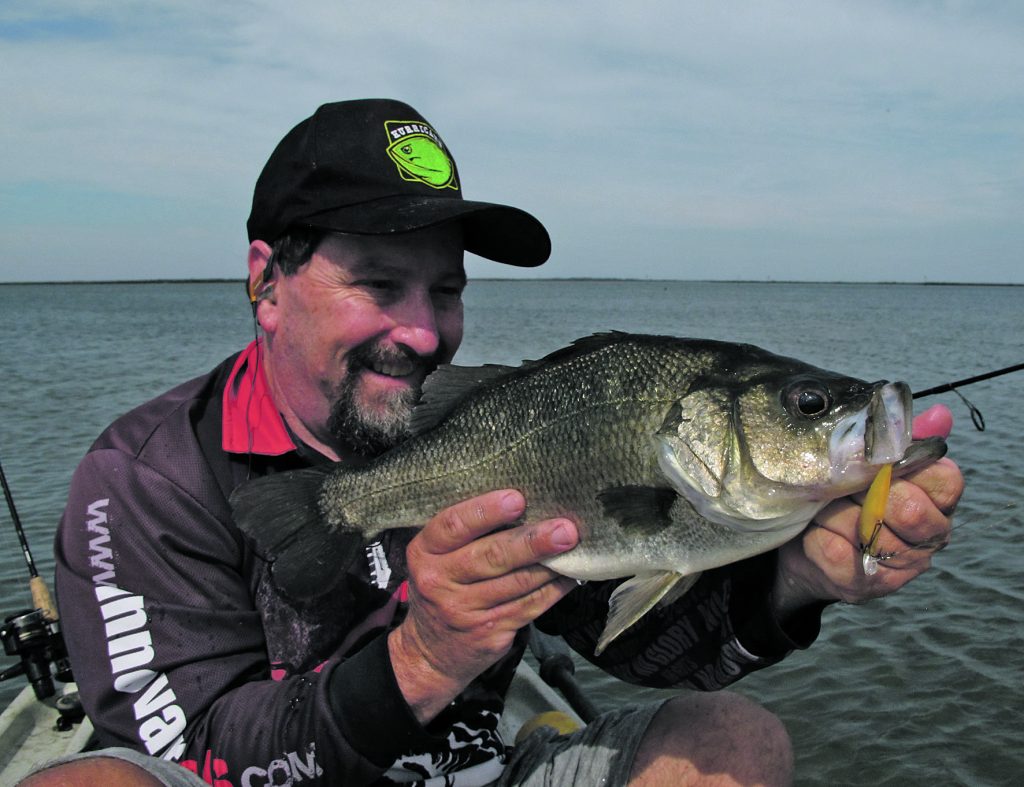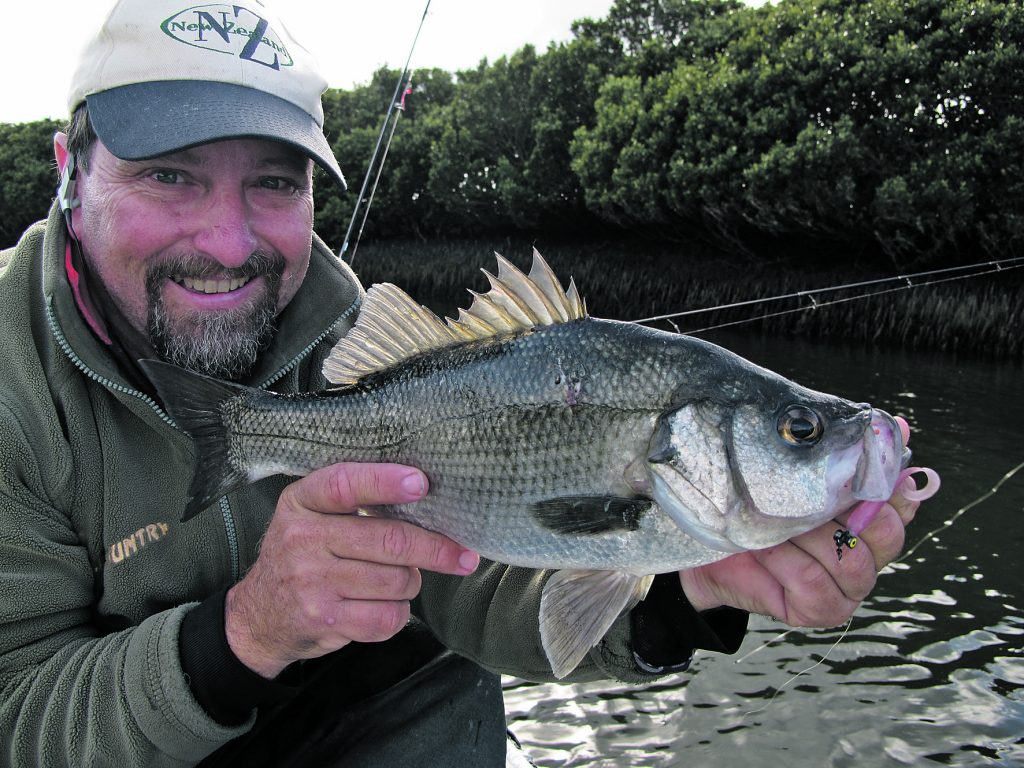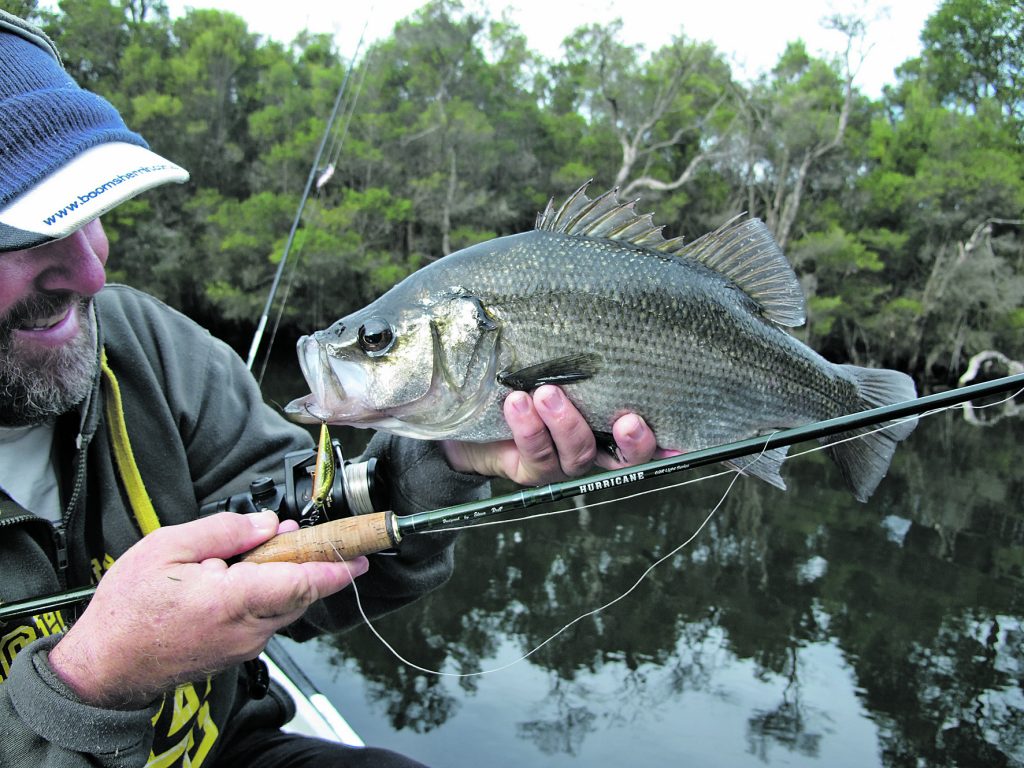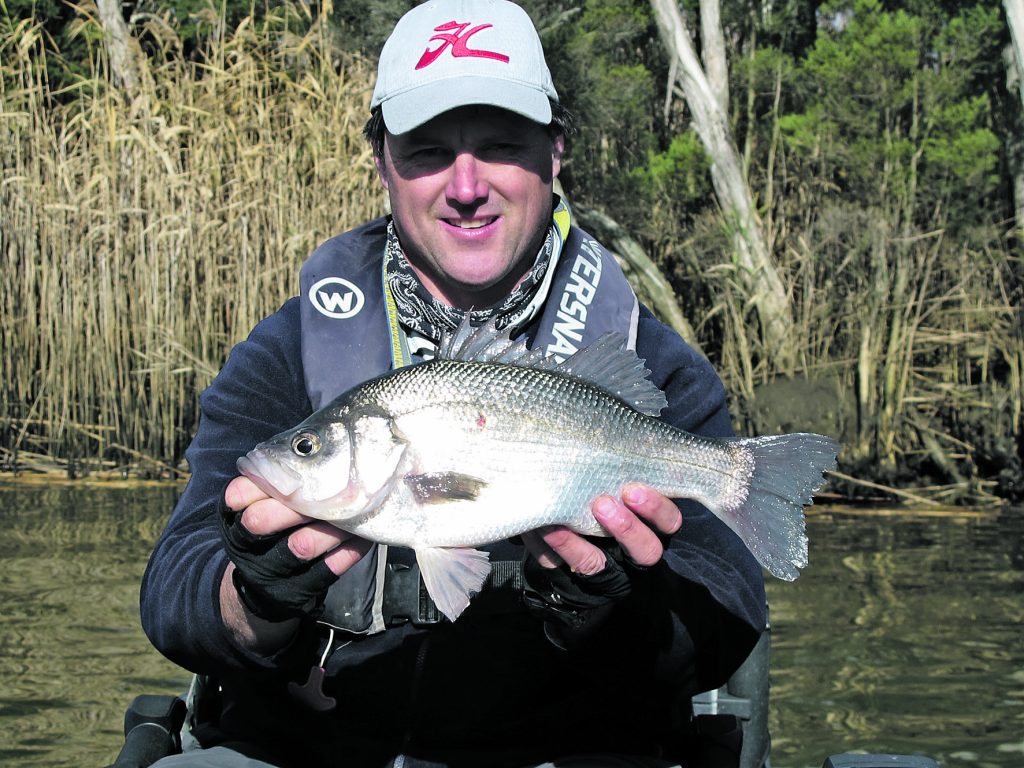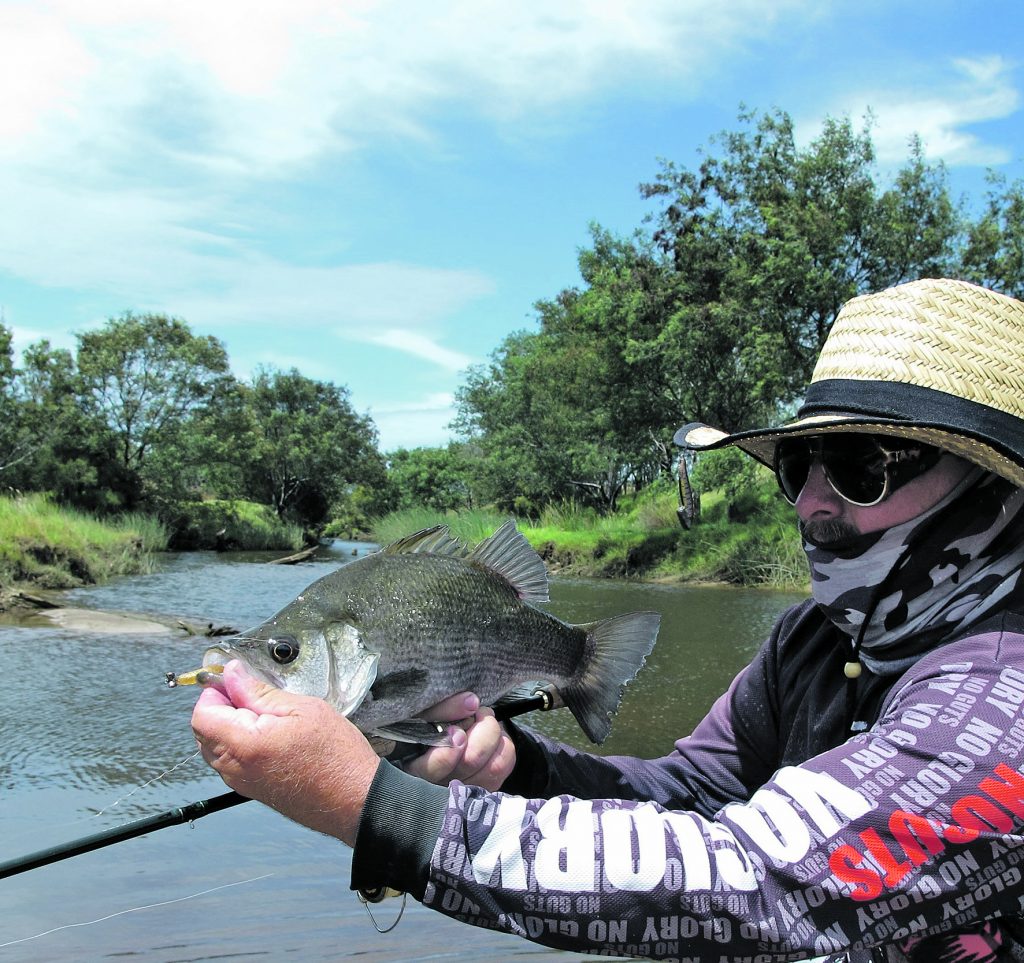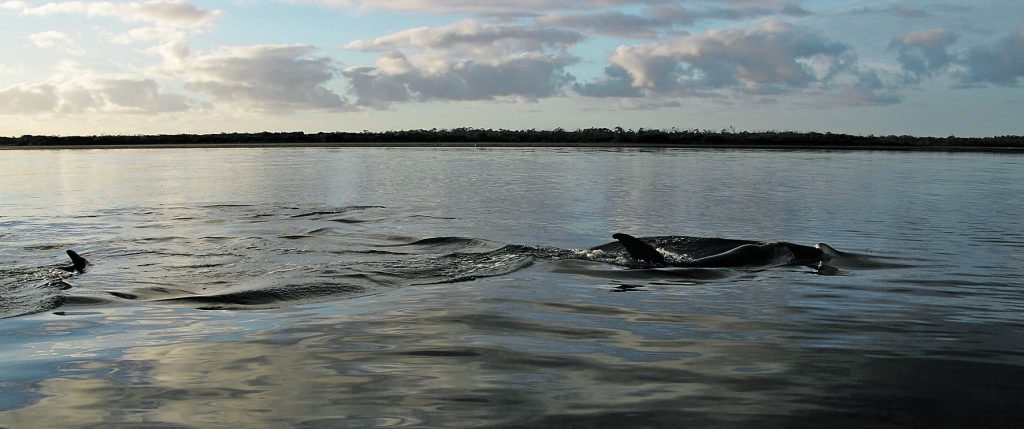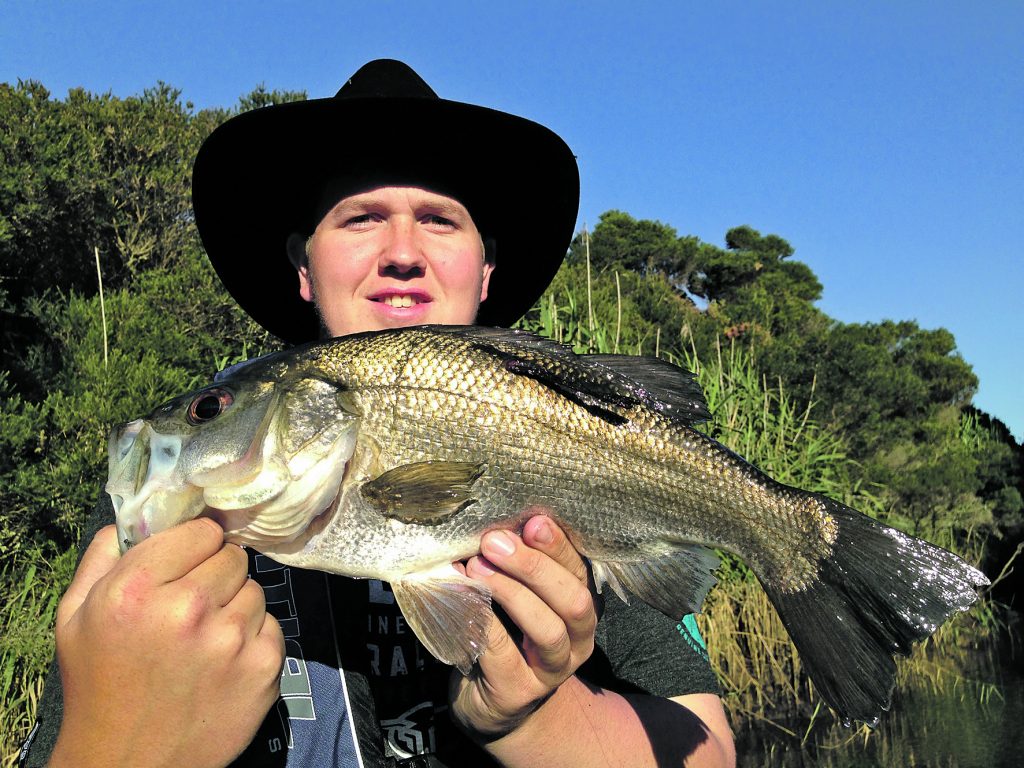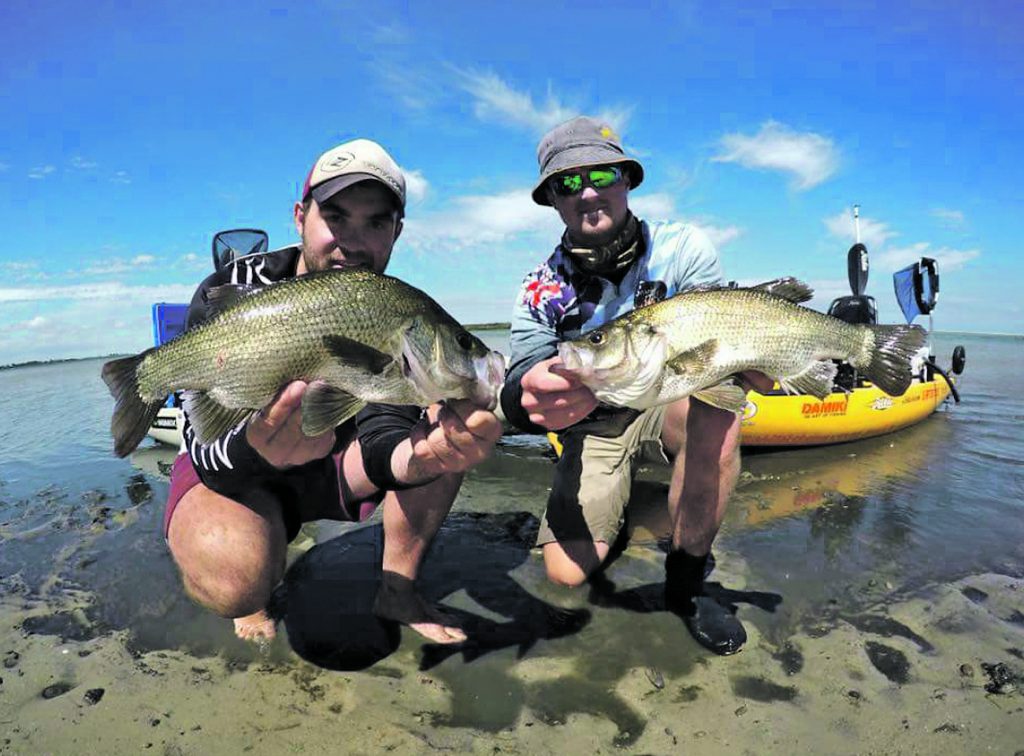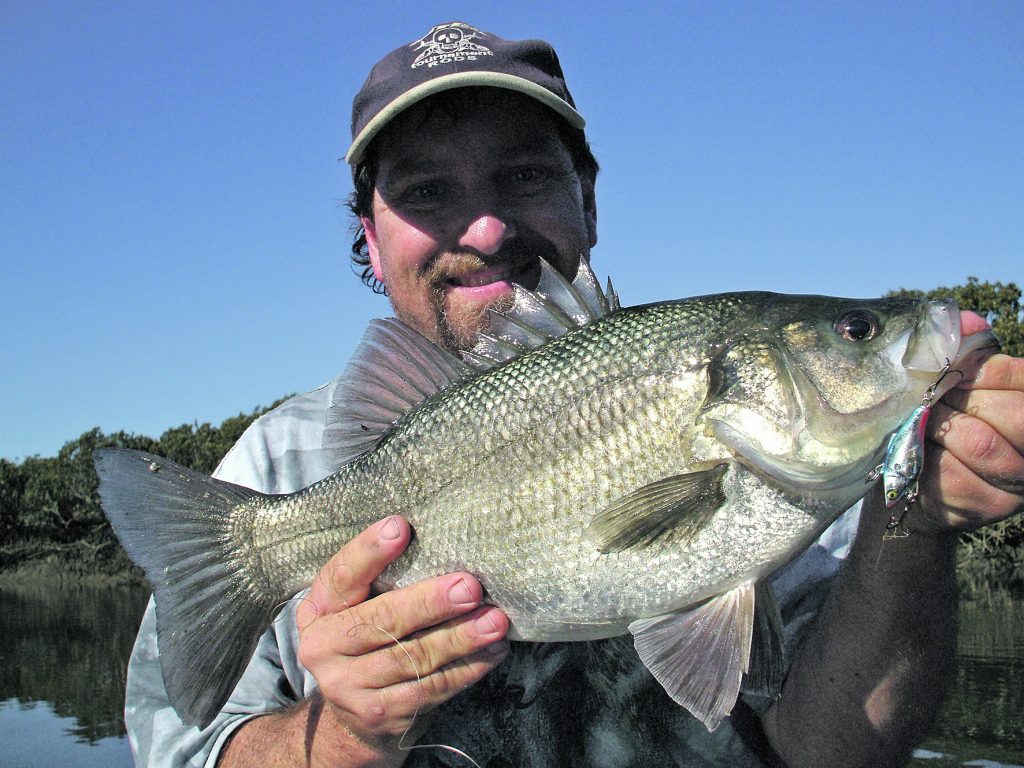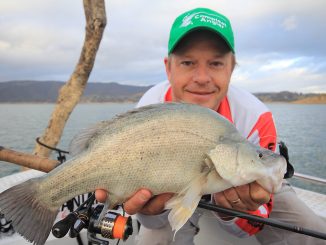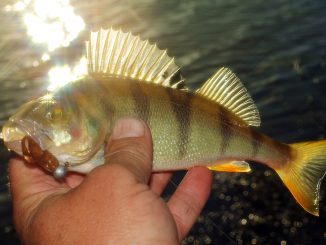
by Brett Geddes •
When talking about EPs even my closest fishing buddies call me sneaky, deceitful, and swampy, and for good reason. Actually they call me a lot worse and I love it! You see, it’s all about finding the perch, catching the hell out of them and not saying where. Then you share photos with dodgy background clues!
It’s simply all about close mates having a bit of fun. There are no real secrets in the fishing world these days, and I’m sure everyone has heard or experienced plenty about perch so I won’t waste time telling you what you already know. I won’t bother talking about lures or techniques either. In this article I’m going to explore perch in a new, maybe even deeper way and pose a few questions to think about.
Here’s the thing: the more I catch and the closer I get to EPs, the more they confuse and totally bewilder me. In fact, for someone who has caught so many perch, I’m still in the dark! I thought I knew it all, but ‘EP’ stands for more than what you think.
Elusive Predator
The hardest thing about being a perch angler is locating them. For a species so easy to trick on lures, they counteract this by being highly mobile. There are times when they are completely shut down like bream or their close cousins the bass, but this is pretty rare. Generally when you find EPs they’ll be willing to bite more than most species we know. However, they will totally refuse lures if they get barraged and see too many of them.
You don’t need skill to trick a perch, but I challenge you just to find them. EPs can be caught from the ocean entrance right up to the first fresh waterfalls. In fact, I’ve even caught EP well above these barriers, right up into tannin water. Just as I celebrate a bass capture, a big estuary perch stares back at me. EPs have even been caught by anglers surf fishing the beach, sometimes not even close to an estuary mouth.
Therein lies the single greatest perch conundrum: where to find them. I can already hear some of you say, “That’s easy! I know where they live.” Get ready for a shock, because those perch are going to hurt you one day. I’ve seen perch completely disappear from snags and sections of rivers or creeks where they once lived in big numbers – even hundreds of fish. But when I say disappear, I mean for good!
Yes, there are some areas or snags where they turn up year on year, day after day, but you should still be prepared for a shock. All my keen EP mates have at some stage been wounded. They’ve told me horror stories of not catching a single perch in the usual hotspots for months on end, and declaring them impossible to find, overfished or even worse – dead and netted! Sometimes the fish eventually reappear for no apparent reason. In other areas they seem to be gone forever.
One thing I know for sure about perch, they can travel enormous distances between estuaries. Just like sheep, they will follow each other right down to the very last individual. EP tagging and recapture data has backed this up, with perch travelling enormous distances across open ocean.
Excellent Prize
In a way, these mass migrations are a good thing. It means the fish can turn up when you least expect it. Just recently I was targeting and catching some ripper flathead to 64cm near Wilsons Promontory, way out in open estuary water. I also caught a couple of pinky snapper and even a flounder on a lure. Happy with my bag, I was ready to head home when a fish twice plucked but missed my soft plastic lure.
Alarm bells rang in my head and I smelled EPs in the air! I quickly changed to a blade lure and searched deeper into the channel I was near. Another two flathead turned up. As the tide rose I stuck to my instincts and kept looking with my best EP searching tool, large blade lures. Bingo – I found them! Big perch were everywhere and nearly all of them 38-45cm.
What a shock and a mind-blowing new surprise find! And it’s just one example of perch turning up for the first time in an area I’ve fished for over 15 years, with no snags or fish-holding structure in sight.
I’ve been back three times now and have caught plenty more. On my second trip I landed nine big perch to 45cm on surface lures in the dark! On my third visit I scored 15 EPs, again all on surface lures and in the early morning. This time I got it all on film. It was the best surface action on perch I’ve had in many years. See what I mean? These fish are just full of surprises.
Every Person
Years ago most people were totally unaware of perch living on their doorstep. These days a heap of lure anglers pursue them, and are very successful in catching big numbers. It’s pretty simple really. With the ever-increasing number of bream being chased on lures, EPs were always going to turn up as a by-catch. In fact, perch are at least 10 times easier to catch on lures than cranky bream!
As I’ve mentioned, most secrets are now well and truly in the past. In the early days most of us kept a lid on the whole deal because we knew how vulnerable they can be to overfishing. Now it seems everyone using lures in estuaries is at least aware of perch if not chasing them on a regular basis.
I’ve seen the huge growth of perch fishing in the Glenelg River over the last five years or so, and some savvy anglers are now also aware of the spectacular sport you can enjoy there on surface lures. A more recent development has been the many EPs caught in Westernport Bay, Patterson Lakes and even the Yarra or Maribyrnong rivers. The biggest impact I’ve seen over the last 10 years to the best EP areas I fish, is an ever-growing army of anglers chasing them.
The increasing and constant angling pressure on these fish can really shut them down. I admit in the early days I learnt the hard way and excitedly returned to newfound EP waters every day I could. Eventually those fish totally shut down or even disappeared altogether. The water was sometimes crystal clear and I could see the perch reject lures. That, or they’d just be gone.
It didn’t take me long to understand that EPs need ‘resting’, and I’m talking about being left alone for weeks. The more lures you hammer them with, the longer they will stay shut down. Some of my red-hot perch haunts where I can admire the odd EP over 50cm, I visit just three or four times a year now.
Sadly for me, fellow dedicated anglers are now also discovering these perch, and good luck to them. I always know when these areas have been fished hard because the perch are very timid and shut down, or even totally absent. It just means I’ve got to look harder or discover new luring tricks. Thankfully, nearly all of those anglers don’t even think of killing any of those precious perch, and it’s nice to live in times when EP are respected and even revered.
Exasperating
Pursuit
Now for the bad news. A couple of remote creeks and a fairly big river in East Gippsland were once very happy hunting grounds for me, with cricket score perch catches from 20cm right up to 52cm back in 2000-2010. Almost overnight, most of the EPs mysteriously disappeared from these streams and haven’t returned to this day. It went from hundreds and hundreds of fish to just handfuls here and there. Other anglers back me up 100%, so that eliminates myself being a hack angler.
So why did the EP leave, and where are they now? Will they come back? These are fairly remote waters with very low angling pressure. Even overfishing or illegal netting can’t get them all.
Then there’s the case of Bemm River. For years it’s been well regarded as a perch haven, with a reputation of big 50cm fish. Sure, there are still EPs there to catch, but nothing like the numbers caught over the last 15 years. Of all the more popular perch locations, more EP have been killed at Bemm than anywhere I know. Recreational anglers have a lot to answer for, because for years I continually heard of bag limits being breached.
Thankfully I think those days of slaughtering perch are now behind us and I hope Bemm recovers by recruiting more perch through the entrance. To build EP numbers with the resident fish that are left will take many decades.
I’m often asked whether EP numbers (right across the whole of Gippsland) have declined or even crashed over the last 20 years. My answer is complicated and it’s specific to each and every location. Happily I still discover a lot of big perch of 40-50cm and even just recently I’ve scored big tallies of 40, 50 or even 80 of those big EPs a session. As I’ve pointed out, I manage those areas and seldom fish them. If other anglers were to score such numbers and hammer those perch, they would shut down or shoot through.
You can understand now why I’m very swampy about locations! In other areas I have seen perch all but disappear for most of the year. In times gone by they were full of perch almost year round and I used to panic when these fish totally disappeared. I thought people were killing them. It’s taken me 20 years to understand that EPs are a highly migratory fish. I’m still learning!
So my answer to EP numbers is very positive, and I believe the population as a whole has not changed in my time. As for going back into history and comparing numbers, say 50 or 100 years ago, I have no idea. This much I do know: every single species of fish seems to have suffered from overfishing, environmental degradation, damming of rivers or pollution. I’m quite sure EPs have also suffered greatly. All the more reason to treasure what we still have. Perch are a tough and hardy fish that can exploit a whole range of habitats. I think their future is fairly safe for now.
Ensuring Populations
Since 2012, more than 500,000 estuary perch fingerlings have been stocked into 14 waters. Many were put into freshwater lakes, and feedback from anglers proves the fish are growing well. In December last year the following perch were released: 10,000 into Albert Park Lake, 8000 into Karkarook Lake, 15,000 into Devilbend Reservoir, 5000 into Lake Hamilton, 5000 into Lake Struan, 15,000 into Werribee River and 15,000 into Melton Reservoir.
Another stocking worthy of note was into Lake Tyers a while ago. The best thing about stocking this lake is that it will be an experiment worth watching, and may decide future programs. We should all be grateful that part of our fishing licence money goes to such a fine cause, and Fisheries are to be congratulated for implementing this terrific program. The fact that in recent history Lake Tyers had very few perch in its waters is a real puzzle.
Flood events should have recruited perch from nearby Lakes Entrance, and if anything the Tyers estuary should be full of EPs. Big numbers also live nearby at Marlo and Bemm, but for some reason Lake Tyers missed out. Over the last 15 years I’ve seen and heard of a few EPs caught here and there within the lake and its two upper tributaries, but really, considering the angler effort for bream and flathead on lures, hundreds of EPs should be caught each year. Or the lake just does not appeal to them for some weird and strange reason.
Is it because of the lake being closed for long periods and even years on end? Those ideas seem totally illogical, and I could dream up more reasons as to why they don’t live in Lake Tyers, but the facts are unforgiving. Perch prefer to live elsewhere.
Confounding the problem even more is that commercial netting years ago produced plenty of EPs in the Tyers estuary, and this confirms that they were once there in big numbers. Knowing that EPs love to swim out in the ocean, I really hope the Lake Tyers stocking will be a success. Once perch exit the lake they seem to go for good. Time will tell and I hope I’m thoroughly wrong.
Employ Perseverance
My final word for this look at EPs is all about determination. The key tactic to discovering big perch and scoring lots of them is to seek, search and explore. If you’re not used to failure then go and chase easier quarry like Aussie salmon, mullet or redfin! Perch are never easy and you will be challenged. That’s the one guarantee you get with these fish. Unless you really persevere, rewards may never come.
My love affair with EPs is more about the constant curve balls they throw at me and the blowout surprises that always keep me guessing. I’m not so much looking for that new PB or to stack another record score of fish, but whenever I head off for the day to chase perch I have absolutely no idea what will happen. You might think that goes for all types of fishing, but EPs provide the biggest wildcards, rewards, frustrations, pleasures and bombshells I’ve ever had in all my years of angling.
Any single trip could yield nothing or just one perch for the day, and then other trips surprise the hell out of me and I come home having trouble keeping count. My biggest tally was just over 160 perch released for a 10-hour winter session. That day I had set off to chase bream! I hear many of those up-and-down stories from other close mates who target EPs, and I’m sure that’s what makes this species so addictive.
My best EP rewards seem to have always required considerable resolve, blood, sweat and tears. It may mean searching for an extra fishless four hours or trying yet another new lure, fishing at night or on the coldest winter’s day, or exploring tiny creeks or vast tidal estuaries.
I’ve even hiked 30km to get a crack at remote EPs, or loaded kayaks into a boat for a two-hour ride down the coast, anchored that boat offshore and then paddled in on the surf into hidden perch-filled creeks. This makes for tremendous memories and wonderful discoveries shared with just a couple of close mates. ‘EP?’ It also stands for Exquisite Pleasures!

